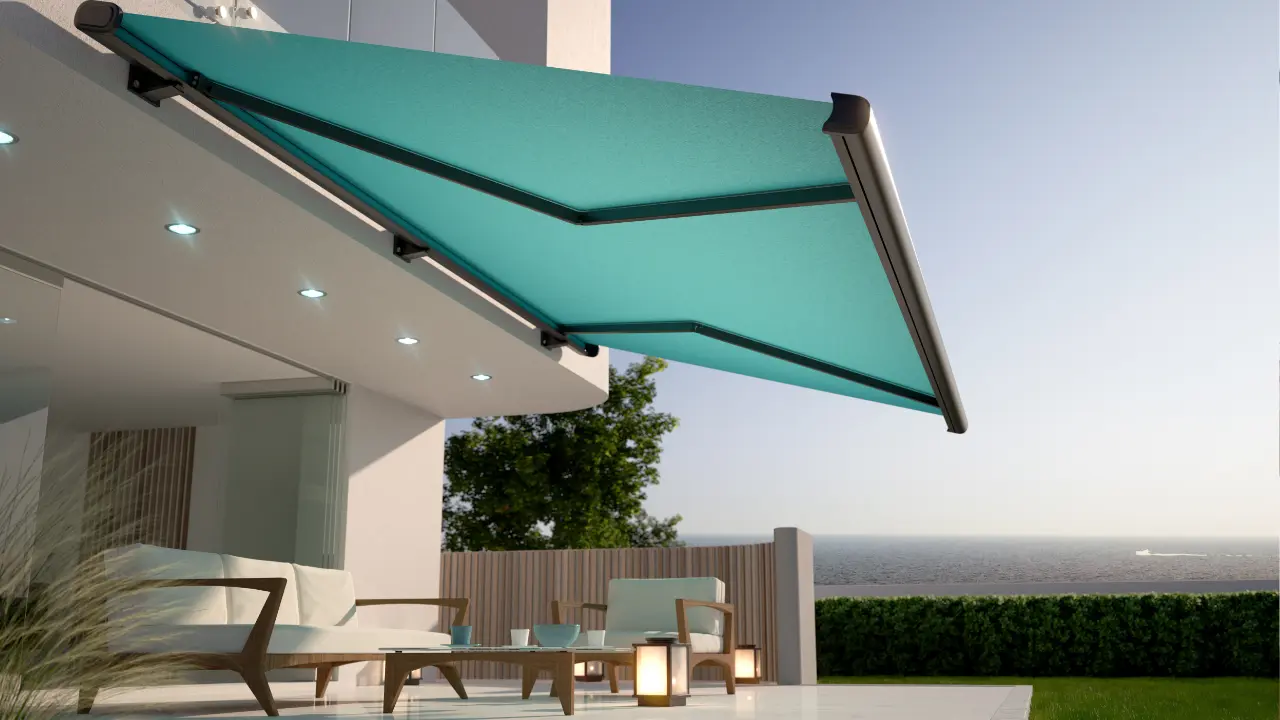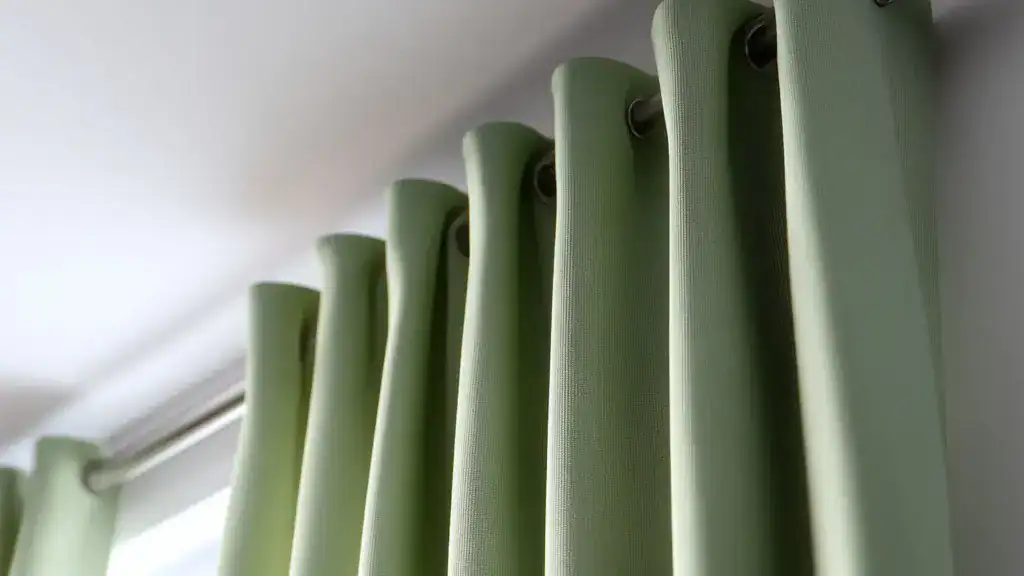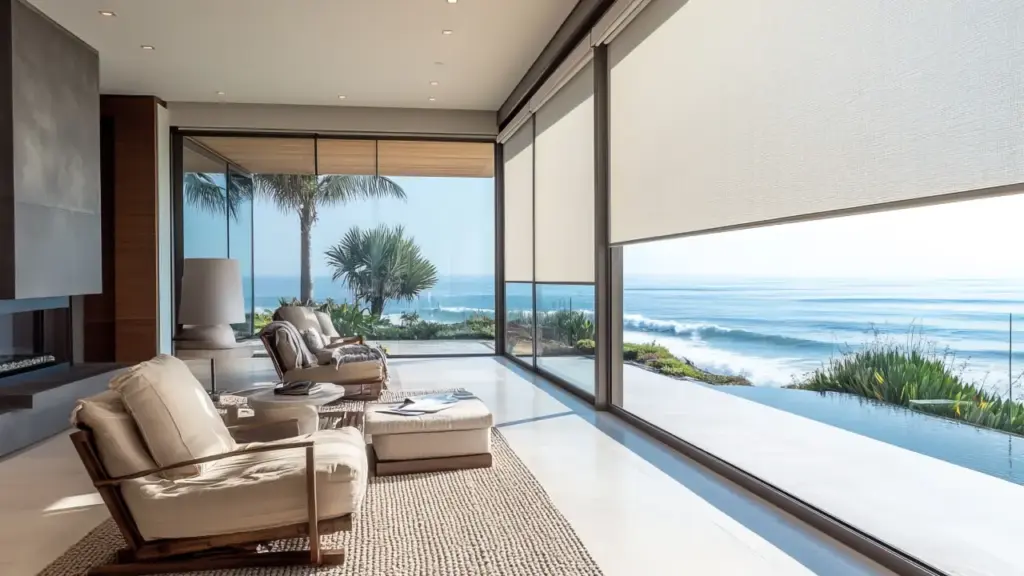Types of Awnings: Which Is Right for Your Space?

Awnings are more than functional additions to your outdoor space. They’re style statements that can transform how you experience and use different areas of your home.
They’re also an investment and much harder to swap out than a new rug or piece of furniture.
So before you take the awning plunge, you should understand the different types available to you, their pros and cons, and which is right for your space. Here’s a breakdown of some popular options:
1. Retractable Awnings
Retractable awnings have a foldable design. When the sun’s blazing, roll them out for some sweet shade. Retract them when you want to bask in the sunlight. Retractable awnings can be motorized or operated manually.
Pros
- Flexibility: You can choose when to have shade or sunlight.
- Protection: They protect your outdoor furniture from the wrath of weather elements.
- Energy Efficiency: They help reduce energy costs by blocking out the summer sun.
Cons
- Durability: Unlike fixed awnings, they’re not designed to withstand heavy winds or snow.
- Maintenance: Motorized versions may require a bit more maintenance.
- Cost: They can be pricier due to their mechanisms and more complex installation.
Best Spaces for Retractable Awnings
- Patio or Deck: Enjoy the shade on a hot summer day and the sun when the weather is mild.
- Balcony: A retractable awning can provide the shade you need if you love your balcony view but hate the afternoon glare.
- Outdoor Dining Area: Create a comfortable dining experience by blocking out harsh light or drizzles.
- Poolside: Protect your skin while lounging by the pool. Retract the awning when you’re ready for full sun.
2. Fixed Awnings
Fixed awnings, also called stationary awnings, are a permanent shade solution. They’re attached to the house and built to withstand inclement conditions.
Pros
- Durability: Be it heavy winds, rain, or snow, these tough guys will weather the storm.
- Maintenance: With no moving parts, they’re low maintenance. Just clean them occasionally, and they’re good to go.
- Design Options: You can customize their shape, size, and materials to match your home’s aesthetics.
Cons
- Lack of Flexibility: Once installed, they’re there to stay. No folding them back when you want a bit of sun.
- Shorter Lifespan: Because they’re constantly exposed to the elements, fixed awnings may have a shorter lifespan than their retractable counterparts.
- Expense of Repairs: If damage occurs, repairing fixed awnings can be more complex and costly than retractable ones. The support structure may require professional restoration.
- Aesthetic Limitations: The fixed design can limit the aesthetics of your outdoor space.
Best Spaces for Fixed Awnings
- Windows and Doors: Cover windows or a patio door to reduce sun exposure and protect your furniture.
- Porch: Create a comfortable outdoor sitting area in any weather.
- Deck: A fixed awning provides shade for dining, relaxing, and cooking on the grill.
3. Portable Awnings
Portable awnings are freestanding structures. They’re typically supported by a sturdy frame, often made of metal or sometimes heavy-duty plastic.
They can be moved around as needed. Styles include pop-up shelters, umbrellas, and canopies.
Pros
- Mobility: Portable awnings let you move your shade as the sun moves or as your needs change. Planning a barbecue in one part of the yard? Move your awning!
- Easy Setup: These awnings are designed for easy assembly and disassembly, making them perfect for temporary use or events.
- Variety: They come in various styles, sizes, and materials to suit any preference or event theme.
Cons
- Stability: Being lighter and designed for movement, they’re less stable and durable than fixed or retractable awnings.
- Weather Resistance: Their lighter construction may not hold during storms or high winds.
- Size Limitations: They may not offer as much coverage as fixed or retractable models.
Best Spaces for Portable Awnings
- Events: Portable awnings are perfect for outdoor parties, weddings, or other events where you need temporary shade.
- Poolside or Beach: They’re excellent for creating a shaded lounge area by the waterside.
- Gardens: If you’re a green thumb and spend hours in the garden, a portable awning can provide respite from the sun.
4. Slide-Wire Cable Awnings
Slide-wire cable awnings, or cable shade canopies, are made from retractable shade panels draped over a cable system. They can fit irregularly shaped areas and cover broad outdoor spaces.
Pros
- Versatility: These awnings are perfect for irregularly shaped and broader areas where a traditional awning wouldn’t fit.
- Adjustability: The awning can be extended or retracted. Adjusting the tension creates a flat or billowy look.
- UV Protection: They provide excellent UV protection without compromising natural light.
- Weather Resistance: The sturdy frames and unique design of slide-wire cable awnings, with cables providing tension to the fabric, enhance their durability in harsh weather conditions.
Cons
- Maintenance: The cables may need occasional adjustment to maintain tension and appearance.
- Lack of Full Coverage: While they offer excellent UV protection, they may not provide complete shade or rain protection due to the spacing between the panels.
Best Spaces for Slide-Wire Cable Awnings
- Irregular Areas: These awnings will cover an irregularly shaped patio or deck.
- Wide Open Spaces: They’re ideal for expansive outdoor areas like courtyards or large decks.
- Garden or Poolside Lounge Areas: Create a comfortable and stylish outdoor space that effectively extends your living space.
5. Shade Sails
Shade sails are a modern, stylish awning that uses tensioned fabric anchored to several points. Ship sails inspired their design, hence the name.
Pros
- Design Flexibility: Shade sails can be arranged or layered in many ways, allowing for an imaginative and trendy look.
- UV Protection: They provide excellent protection from harmful UV rays, making your outdoor space safer for prolonged use.
- Air Circulation: The open design allows for better air circulation underneath, offering a cooler environment than other awning types.
- Easy Installation: Shade sails can often be installed without professional help.
Cons
- Weather Resistance: While shade sails can handle light rain and moderate wind, heavy weather conditions might damage them.
- Limited Coverage: Shade sails may not provide as much coverage as more traditional awnings, depending on their size and installation.
- Maintenance: They require regular cleaning and may need to be taken down in adverse weather conditions or winter months.
Best Spaces for Shade Sails
- Decks and Patios: Shade sails make a stylish and functional addition to your deck or patio.
- Play Areas: Place them over sandboxes, swing sets, or other play areas to protect kids from the sun.
- Gardens: Shade sails can offer a respite from the sun for you and your plants.
- Pools: Install one over your pool area for a chic sun shield.
Budget Considerations
Several factors can influence an awning’s cost.
- Materials used
- The awning’s size
- Manual, motorized, or fixed awning type
- Custom designs and features
- Sensors
- Added UV protection
While it might be tempting to choose the cheapest awning, high-quality materials are more durable and require less maintenance in the long run.
DIY installation can save you money upfront. However, professional installation ensures the job is correct, safe, and warranted.
Professional installation is sometimes the only legal choice if your awning requires electrical work.
Maintenance Tips
Regular Cleaning & Inspections
Regular upkeep prolongs your awning’s life and keeps it looking fresh and vibrant.
- Dust it off with a soft broom and hose it down lightly.
- For stubborn stains, use mild soap and water, scrub gently, and rinse thoroughly.
- To prevent mildew, allow it to dry completely before retracting it.
- Inspect your awning regularly for signs of wear and tear, loose fittings, or parts that may need repair or replacement.
Seasonal Care for Different Types
- Canvas awnings may need waterproofing treatment every few years, especially in rainy climates.
- Retractable awnings should be retracted in strong winds or heavy snowfall to prevent damage.
- Shade sails can withstand harsher conditions. Still, taking them down during extreme weather can significantly lengthen their lifespan.
Troubleshooting Common Issues
- Stuck Retractable Awning: This could be due to a jammed mechanism. Lubricate the joints and try gently moving the awning. If it’s motorized, check the battery or power supply.
- Sagging or Flapping Awning: Inspect for loose mountings and tighten them. You may also need to adjust the tension.
- Mildew or Mold: Clean the awning with a mildew remover. Retract only when it’s completely dry to prevent further growth.
- Faded Colors: Use a fabric UV protectant to prevent color fading and extend the lifespan of your awning.
- Torn Fabric or Broken Frame: Severe weather conditions or accidents can tear an awning or break the frame. Have a professional repair or replace it to ensure safety and proper installation.
- Water Pooling: This could happen if the awning is improperly sloped or the tension is out of adjustment. Left unchecked, it can lead to sagging or even tearing.
Where to Buy Awnings in Los Angeles
If you’re looking for budget-friendly options, home improvement stores have a decent range of awnings at varying prices.
Online shopping platforms offer various awnings that can be shipped to your doorstep.
For the highest quality customized awnings, please contact us at Aero Shade. We’ve installed hundreds of awnings for LA-area homes and businesses, and we follow up every installation with best-in-class customer calls.
Call us today at 323-457-2835 for a free estimate, or visit our showroom in Los Angeles near Beverly Hills.
FAQs: Answering Your Questions about Awnings
Q: Can I install a retractable awning DIY, or should I hire a professional?
It depends on the complexity of the installation. For larger or motorized systems, we recommend hiring professionals for safety and warranty purposes.
Q: How often should I clean my awning?
We recommend cleaning your awning at least twice a year or more often if you notice dirt buildup or stains.
Q: Can I leave my awning out during the winter months?
It depends on the type and material of your awning. Retractable awnings should be retracted in harsh weather conditions to prevent damage. Other types, like sun sails, can withstand harsher conditions but should be taken down and stored during extreme weather or winter months to prolong their lifespan.
Q: What fabric is best for withstanding different weather conditions?
Acrylic fabrics are more durable and resistant to UV rays, making them popular for sunny climates. Vinyl-coated polyester is a good option for rainy or snowy areas since it can withstand heavy precipitation.
Q: How long do awnings typically last?
The lifespan of an awning depends on various factors, including the type, material, and climate. On average, well-maintained awnings can last anywhere from 5 to 15 years. Regular cleaning, inspections, and seasonal care can extend their lifespan.
Q: Do awnings add value to my home?
Awnings can enhance your home’s curb appeal and expand functional outdoor living space. They also reduce heat gain inside the house, attracting potential buyers and making your home stand out in the market.
Q: Are there specific regulations for installing awnings in residential areas?
Check with local authorities for any regulations or required permits. Some neighborhoods may have rules regarding the permitted size, color, and material of awnings. Professional awning companies like Aero Shade are well-versed in local regulations and can handle any permits.
Q: Can I customize the color and design of my awning to match my home’s exterior?
Most awning companies offer a range of fabrics, colors, and designs. And you can add custom graphics or logos for a personal touch.
Q: Can I use my awning during rain showers?
It depends on the type and material of your awning. Some awnings, like retractable ones, may have sensors that automatically retract when they detect rain or strong winds. Others, like fixed or freestanding awnings, can withstand rain but may not be suitable for heavy downpours.


